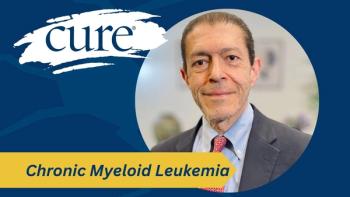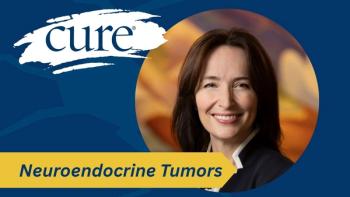
June Breast Cancer Highlights: Top 5 Updates Patients Should Know
Key Takeaways
- The DESTINY-Breast09 study suggests a promising new first-line therapy for HER2-positive breast cancer, improving progression-free survival with Enhertu and Perjeta.
- EMBER-3 trial results indicate imlunestrant, alone or with Verzenios, enhances patient-reported outcomes in ER-positive, HER2-negative advanced breast cancer.
June brought major breast cancer updates, and CURE is sharing the latest treatment combinations, biomarker-driven care and patient well-being.
As June draws to a close, it is clear to see the significant advancements that the field of oncology has experienced, particularly in breast cancer research. The recent
From novel combination therapies showing improved outcomes in advanced disease to understanding how biomarkers drive patient treatment decisions in breast cancer care, there is a lot to look back on. Notably, the DESTINY-Breast09 study continues to generate excitement among clinicians and patients alike, as its investigative treatment combination emerges as a new potential first-line therapy option.
These informative and practice-changing updates offer renewed hope for more effective and tailored approaches in breast cancer management. Read on to hear more about these updates below.
A Treatment Combo Improved Patient-Reported Outcomes in Advanced Breast Cancer
For patients with estrogen receptor (ER)–positive, HER2-negative advanced breast cancer whose disease progressed after endocrine therapy, there were updates from the 2025 ASCO Annual Meeting.
Investigators reported that treatment with imlunestrant, either alone or combined with Verzenios (abemaciclib),
“Consistent with the primary results from EMBER-3, these patient-reported outcomes results reinforce the benefit of imlunestrant, as monotherapy or combined with Verzenios, as an all-oral targeted therapy option after progression on [endocrine therapy] for patients with ER-positive, HER2-negative [advanced breast cancer],” lead study author, Dr. Giuseppe Curigliano, said.
Curigliano is a professor of medical oncology at the University of Milano, and of the European Institute of Oncology, National Institute of Hospitalization and Scientific Care in Milano, Italy, and coauthors, in the presentation.
Breast Cancer Therapy: Does It Last Across Age?
Notably new data from the phase 3 NATALEE trial, also presented at the ASCO Meeting, showed that adding Kisqali (ribociclib) to a nonsteroidal aromatase inhibitor (NSAI)
“This analysis showed that [Kisqali] in combination with letrozole or anastrozole lowered the chance of the cancer returning and was safe to use in a broad population of patients with HR-positive, HER2-negative early breast cancer,” lead study author Dr. Kevin Kalinsky, said in an oral presentation during the meeting. “[Kisqali] plus a NSAI provides treatment benefit to a broad range of patients with stage 2/stage 3 HR-positive, HER2-negative early breast cancer across menopausal status and age.”
Kalinsky is a professor and director of the Division of Medical Oncology of the Department of Hematology and Medical Oncology at Emory University School of Medicine, and the director of the Glenn Family Breast Center at Winship Cancer Institute.
Breast Cancer Biomarkers Drives Patient Treatment Decisions
It is vital for patients to
Mardones went on to highlight some main points for patients with ER-positive, HER2-negative disease, stating that an understanding of these characteristics can inform every step of treatment, from staging to therapies.
“There's lots of options in the combination [therapy] space, in the first and second line with oral selective estrogen receptor degraders [SERDs] and CDKs. There's lots more options for targeted therapies and the PIK3CA space; there's at least four or five other agents and trials that are coming up in that space,” she explained. “[Those agents] came up in the conversation at our meeting too, about their toxicities, which are, unfortunately quite a lot. Although effective agents, they are not conducive to really great quality of life for a long time.”
The Importance of the DESTINY-Breast09 Trial in HER2+ Breast Cancer
In the interview,
“The combination of [Enhertu] and Perjeta, as we saw in DESTINY-Breast09, [nearly] doubled progression-free survival [for patients]. Therefore, I think [this treatment] does present a really nice new potential first-line therapy option for patients if they're newly diagnosed with metastatic HER2-positive positive breast cancer,” she emphasized.
Tolaney is a senior physician at Dana-Farber Cancer Institute and the chief of the Division of Breast Oncology at the Susan F. Smith Center for Women's Cancers, where she also serves as the associate director. Additionally, she is an associate professor of medicine at Harvard Medical School, located in Boston, Massachusetts.
A Blood Test May Help Guide Breast Cancer Treatment
Dr. Joshua K. Sabari and Dr. Rita Mukhtar sat down for an interview following the ASCO Meeting, where they discussed the importance of understanding the utility of circulating tumor DNA (ctDNA); at the meeting, investigators, such as Mukhtar, presented data on the potential benefit of using ctDNA to guide surgical decision-making following neoadjuvant chemotherapy.
ctDNA are small pieces of DNA which can be detected and are released by tumor cells into a person’s blood; if detected early, they have the potential to guide treatment decisions, according to the National Cancer Institute website.
“These data kind of open the door to the idea that we might be checking ctDNA before we go to the operating room, and based on the result of that, deciding if we’re going to do just a sentinel node biopsy or the full axillary dissection,” Mukhtar explained.
Mukhtar specializes in breast and general surgery and serves as an associate professor of surgery in the Division of Surgical Oncology at the University of San Francisco (UCSF), UCSF Health. Sabari serves as an assistant professor in the Department of Medicine at NYU Grossman School of Medicine and director of High Reliability Organization Initiatives at Perlmutter Cancer Center.
References:
- “Patient-reported outcomes (PROs) in patients with ER+, HER2- advanced breast cancer (ABC) treated with imlunestrant, investigator’s choice standard endocrine therapy, or imlunestrant + abemaciclib: Results from the phase III EMBER-3 trial" by Dr. Curigliano G, et al., Journal of Clinical Oncology.
- “Efficacy and safety of Kisqali plus nonsteroidal aromatase inhibitor in NATALEE: analysis across menopausal status and age” by Dr. Kevin Kalinsky, et al., Journal of Clinical Oncology.
For more news on cancer updates, research and education,





